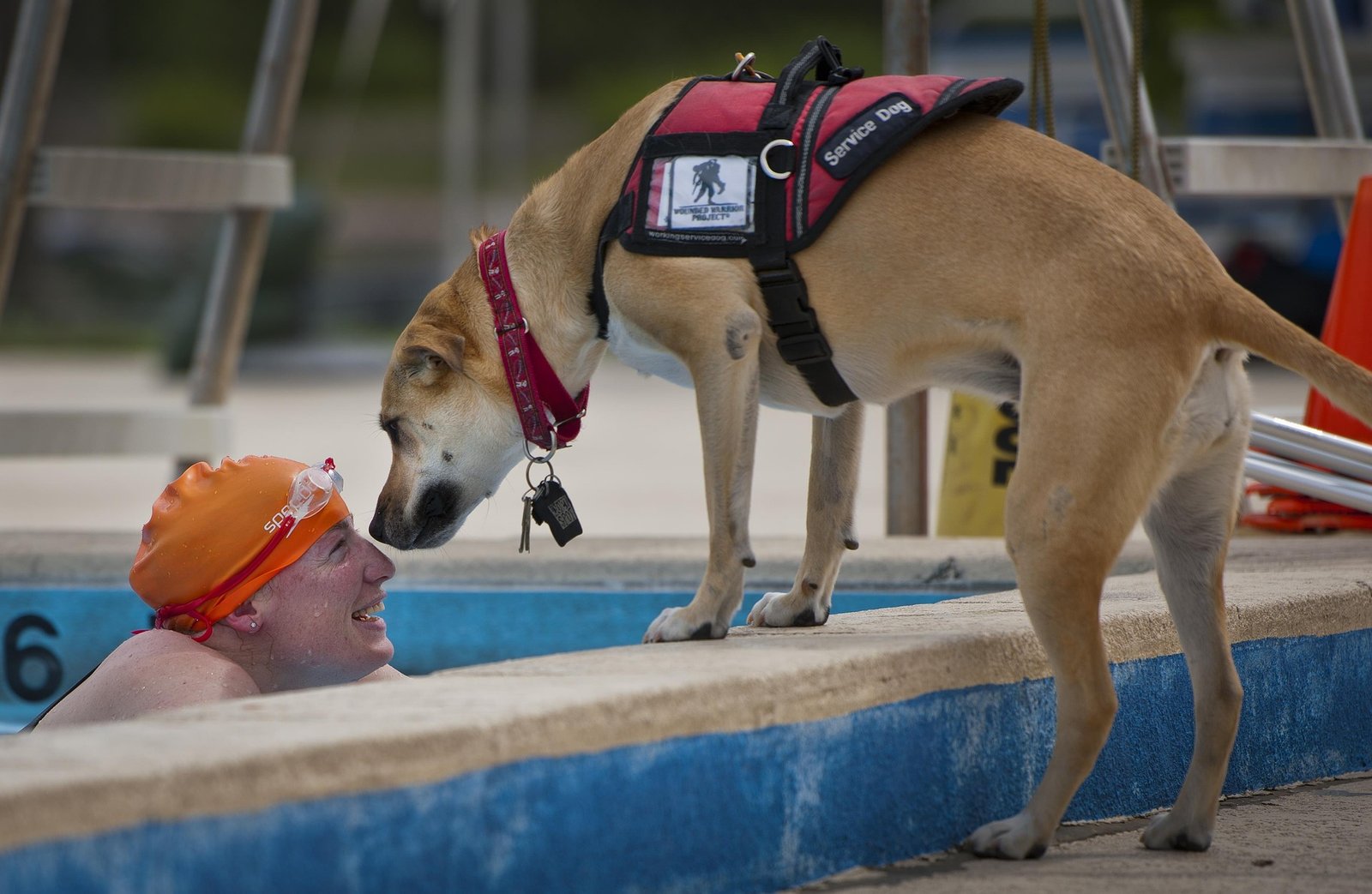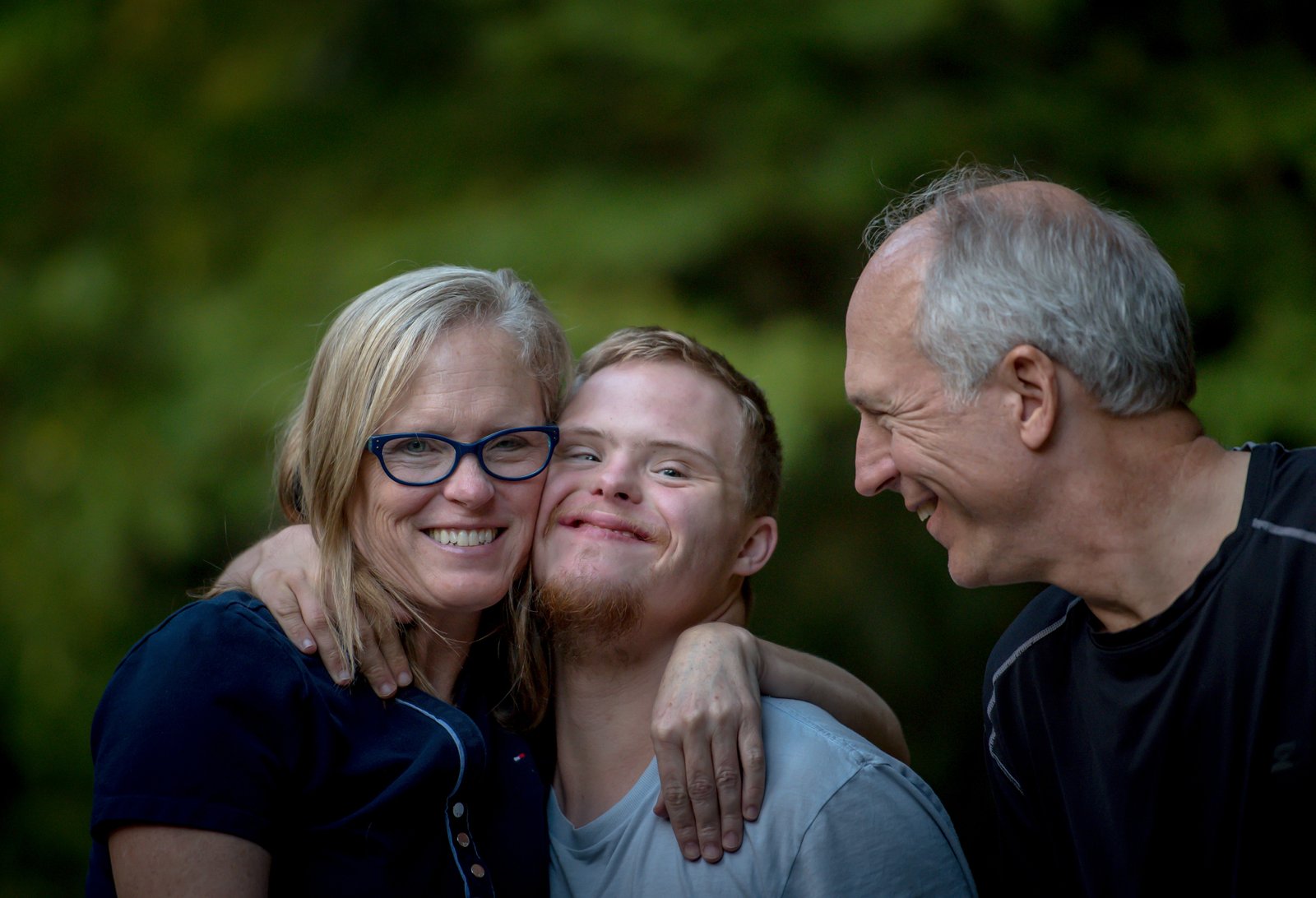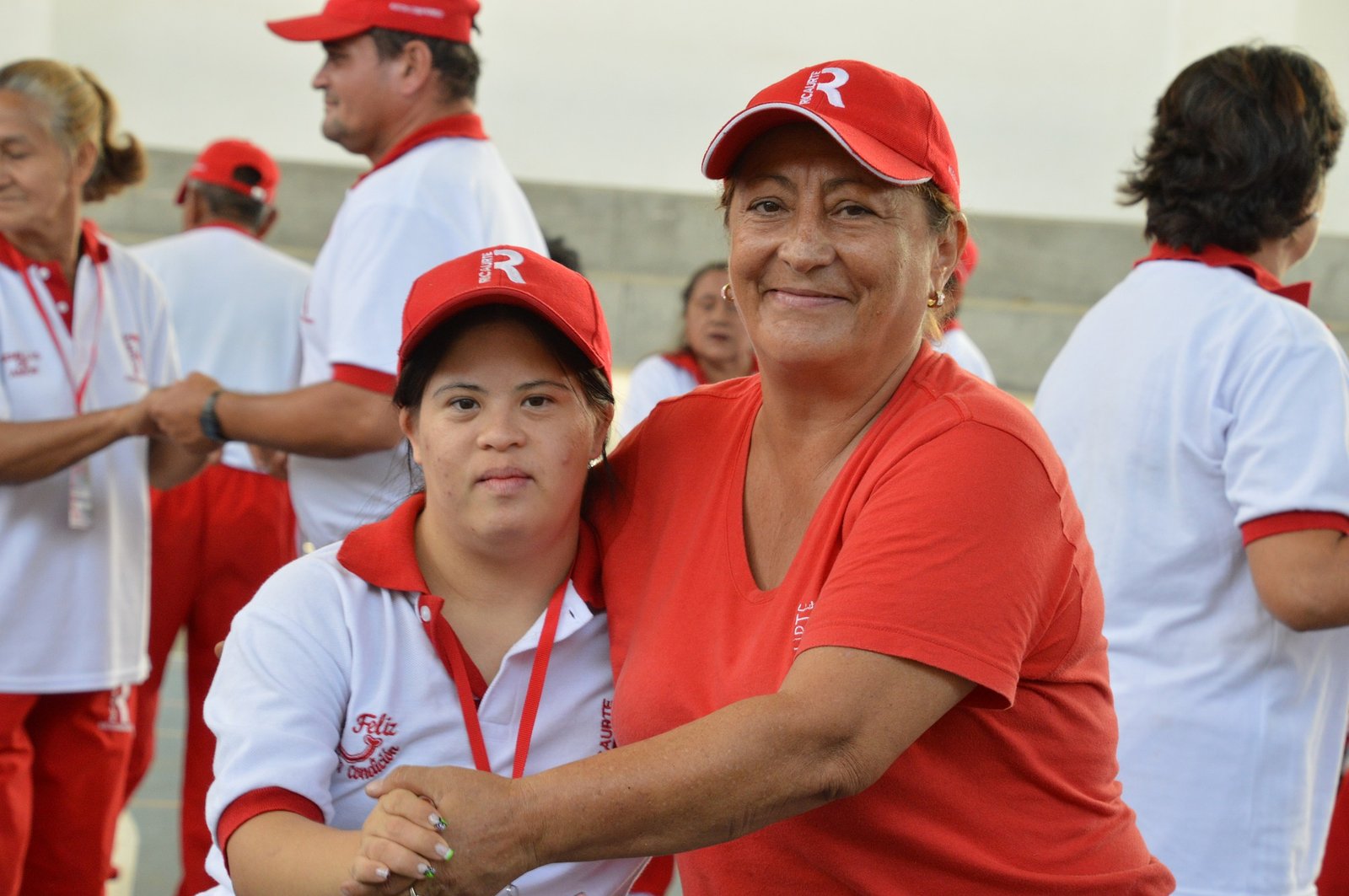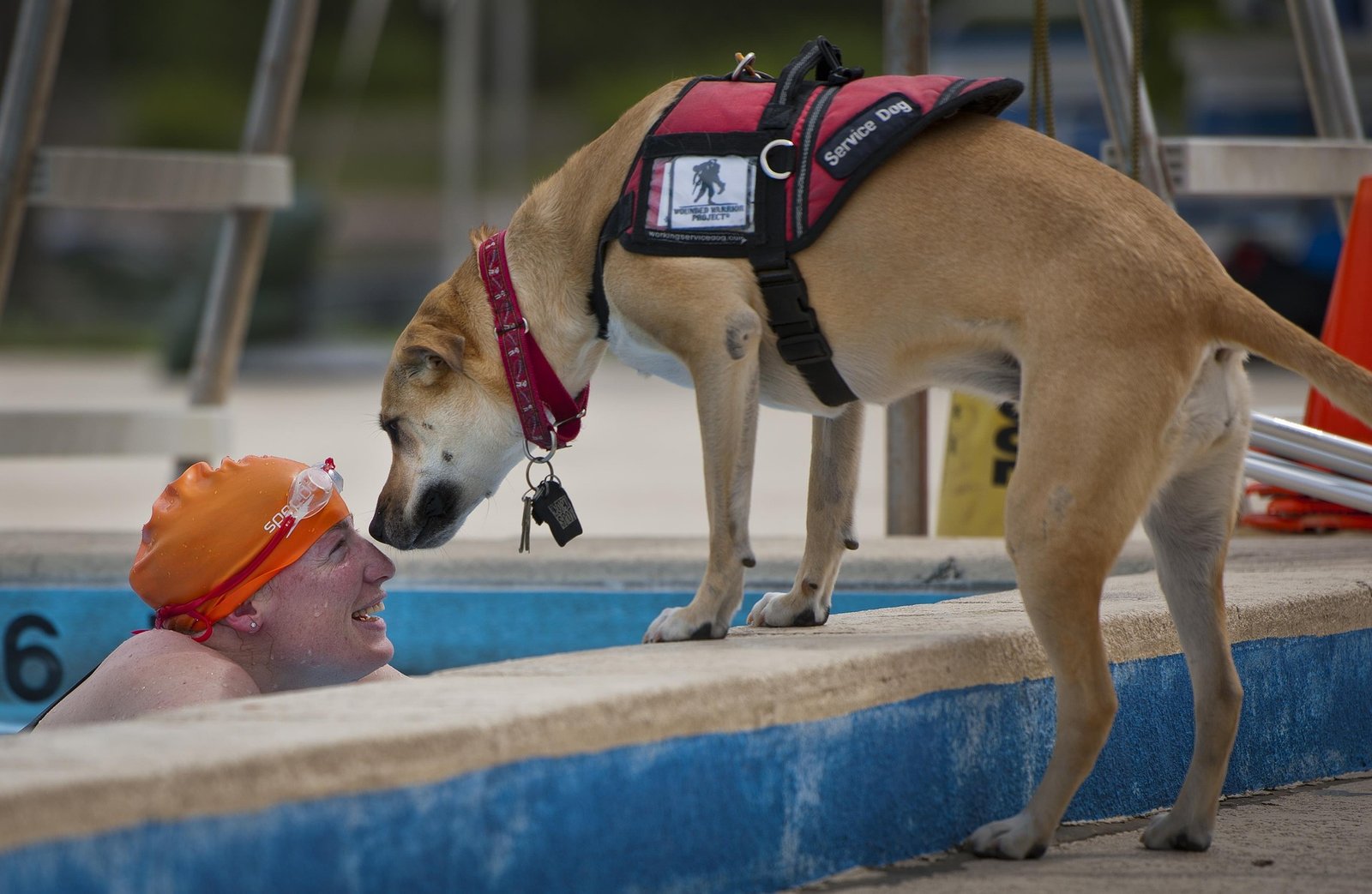What is a deficit mentality and how can it prevent you from disability integration? What is a cultural approach and why does it matter? We’ve got the answers this week on the blog, Facebook, and Instagram.
Note: this post contains a few affiliate links, which means purchasing the product through that link gives us a small percentage. Nothing we link has been sponsored or paid for – these are our genuine recommendations.

“Why won’t she just say acknowledge when her friends say ‘hi’ to her? When will he learn to use his fidget tool to focus in class? Why can’t he just sit still for one second in Mass? Why won’t she just follow simple directions? How do I get him to pay attention during bible study?”
These are pretty typical questions asked about students and adults alike with various neurodifferences, sometimes referred to as invisible disabilities (i.e. developmental, learning, or mental health disabilities). If you’ve wondered or asked these questions or questions like them, you’re not alone. They reflect the pervasive approach to disability: deficit/challenge/problem.
The problem with the deficit/challenge/problem perspective is that it doesn’t lead to disability integration and it doesn’t treat individuals with disabilities with the inherent dignity of someone made in the imago dei. Again, this is the pervasive lens many approach disability with, so this post isn’t about shaming anyone; this is about helping us grow and find a better path: the intercultural path.
Shifting to a cultural or intercultural mentality
The single, probably most important step needed for disability integration is a perspective shift away from a deficit mentality to a cultural mentality.

This is important because, as we talked about last week, programs and ministries are tools to help with our ultimate mission of leading people to Christ, but without actually understanding the people we’re evangelizing and catechizing and how disability affects their experience of life and faith, we’re more likely to misuse or misapply tools. Without a cultural approach or understanding, we’re stuck in a deficit mentality and that leads to things like checklists that may or may not work. When you understand the experience of an individual with a disability, you’re better able to meet their unique, specific needs, rather than manipulate the situation to get your own needs met (e.g. getting through curriculum, calm environment, no disruptions, compliance, etc.).
For example, there are some resources that treat people like an “if-then” chart. If your student does or doesn’t do this or that, then you should do this or that. “If a student isn’t listening or complying, stand near them and repeat the directions.” That’s great if they’re not responding because their brain can’t filter out background noise. Not so great if they aren’t responding because they are anxious and overwhelmed sensory wise – now you’re probably intimidating them with your physical proximity, especially if you’re bigger than them. Or they might not be responding because something happened out of routine that day so they’re needing that extra sense of control and predictability, which means they’re acting a little more rigidly. A checklist can’t help you understand the underlying reasons or motivations for the behavior – only the individual and a humble intercultural knowledge can give you the appropriate context.

This is what a cultural approach does. Rather than saying, “how do I get a child with ADHD to focus during faith formation,” we can begin to ask, “what is the experience of ADHD like and how do I meet this child in their experience?” You’re likely going to have much better solutions and results with the latter frame of mind than the former and most importantly, it treats your student like a human being rather than a problem or challenge. This applies to adults as well as children – remember, children with disabilities grow up to be adults with disabilities; even if the adult has more coping tools, that doesn’t mean they aren’t working hard and in need of understanding, acceptance, appreciation, and possibly supports.
Building intercultural knowledge and understanding
Okay, so you see the importance of shifting to a cultural perspective and being aware of rejecting the deficit/challenge/problem mentality. Now that you’re committed to a cultural approach, what next? How do you get started in delving into intercultural understanding?

The first source for learning, knowing, and understanding are the individuals and communities themselves within your life/parish already. Want to understand autism? Go spend time with the people on the autism spectrum in your parish. Immerse yourself in the local autism community. Want to understand people with Cerebral Palsy? Spend time truly getting to know individuals with Cerebral Palsy in your parish and local community. Closely related, so maybe we’ll call it :Source 1b” would be the loved ones within these communities: parents, significant others, spouses, children, siblings, etc. of individuals from the various disability communities.

Second, self-advocates and organizations that work with actually disabled individuals can be a way to access information about disability communities from the perspective of disabled individuals outside your local community. The information might be a broader or more generalized, which means that not everything will be applicable to the specific individuals in your parish or local community. For example, just because executive functioning challenges can be a significant issue for some people on the autism spectrum, doesn’t mean EF challenges are what you’re seeing at your bible study – you might be seeing sensory processing differences or auditory processing challenges, etc.
Third, professionals can be a good source for even more general information. It’s very important to recognize that not all professionals actually understand the culture of the disability community they’re writing or talking about. Some professionals know their profession well and some professionals know the community they are supporting well in addition to understanding their profession; this is why your specific individuals locally are first, self-advocates more broadly are second, and professionals are third. If you, are well-informed by the people in your life and self-advocates in general, you’ll be able to better spot the professionals who “get it” and those who only get their profession.
Some of our favorite secondary and tertiary resources

So, after you’ve placed individuals with disabilities in your life as your primary source for growing your knowledge and understanding of disabilities, I want to share some of my favorite secondary and even a few tertiary sources for intercultural knowledge. Also, if you like us and follow us on Facebook, we share videos and posts from many of these resources (and more) to give snippets of intercultural knowledge, so join us on our Facebook page, for curated resources (Uniquely Catholic on Facebook).
Websites/Organizations
- Autistic Self-Advocacy Network
- National Association of the Deaf
- National Down Syndrome Society
- Tilt Parenting
- AI Media
- National Catholic Partnership on Disability
- UniquelyCatholic.org
- The Mighty.com
- Neurodivergent Rebel
- Cerebral Palsy Foundation
- Special Books by Special Kids (SBSK)
- ThinkInclusive.us
- National Catholic Board on Full Inclusion (for Catholic Schools)
Publications/Books
- “Guidelines for the Celebration of the Sacraments with Persons with Disabilities” revised edition (USCCB)
- Best Practices for Shared Parishes (USCCB)
- The Reason I Jump by Naoki Higashida
- The Autistic Brain by Temple Grandin, PhD
- Uniquely Human by Barry M. Prizant, PhD
- NeuroTribes by Steve Silberman
- The Out-of-Sync Child by Carol Stock Kranowitz
Individual Advocates
- Amethyst Schauber (Autism)
- Dillan Barmache (Autism)
- Naoki Higashida (Autism)
- Nyle DiMarco (Deaf)
- Rikki Poynter (Deaf)
- Zach Anner (Cerebral Palsy)
- Molly Burke (Blind)
- Lucy Edwards (Blind)
- Lauren Potter (Down Syndrome)
- John Franklin Stephens AKA Frank Stephens (Down Syndrome)
As we talked about last week – this is an ongoing process, so don’t think of this as an exhaustive list. This is only the beginning…
Join us this week on Facebook as we focus specifically on making the cultural shift:
Daily – disability culture posts.
Thursday, 11am PST – Facebook Live Chat going into more detail and answering your questions about the shifting to cultural approach to disability integration and watching out for deficit mentalities.


This was a wonderful resource compilation! I didn’t even know that the USCCB had guidelines for disability accommodations. Thanks so much for sharing!
Love this resource! As a teacher, the book Better than Normal by Dr. Archer really challenged my thinking about neurological differences – I highly recommend it.
I hadn’t even thought about how disabilities can affect critical pieces of an individual’s spiritual life – like Mass! Thanks for speaking about this, and offering some guidance to those of us who are new to it. 🙂
Absolutely! Thank you for your openness and engagement in this process.
Thank you for sharing this information! Great resources – I’m bookmarking this! 🙂
Excellent!
So glad to find another Catholic blogger who doesn’t recommend a certain puzzle-piece organization out here. Glad to “meet” you. Great tips to really shift people from thinking that us-vs-them mentality into a more understanding perspective. It’s so much easier to build a “we” if we shift our focuses from the medical model to the social model of Disability.